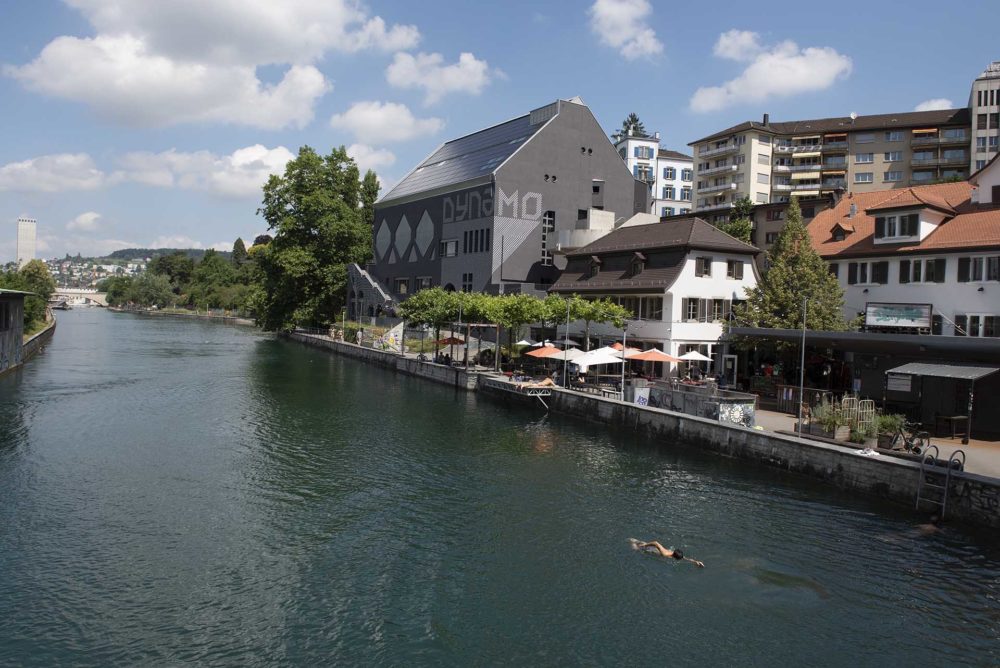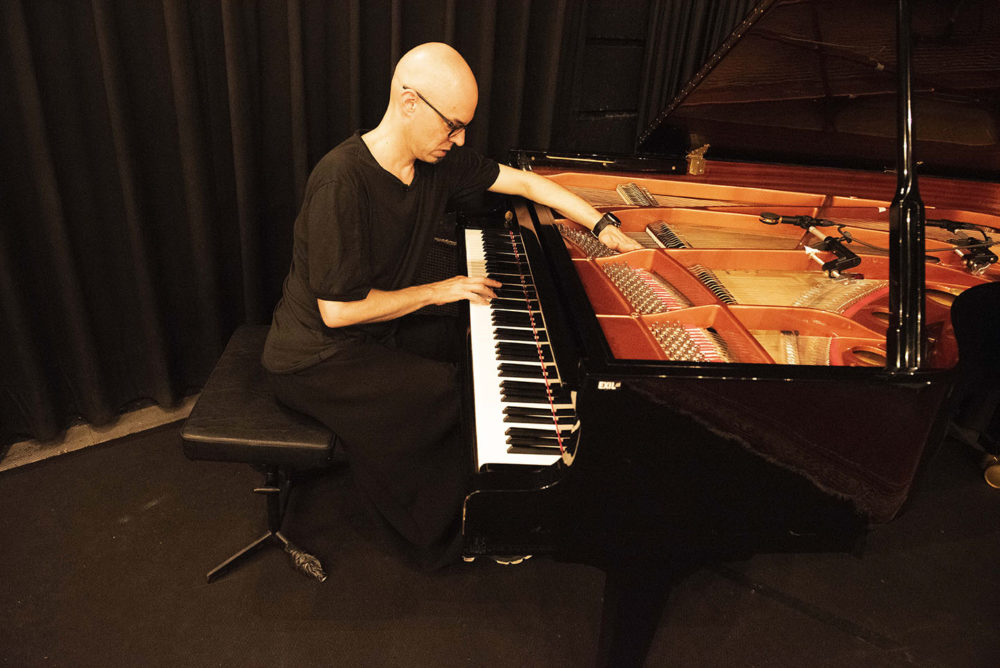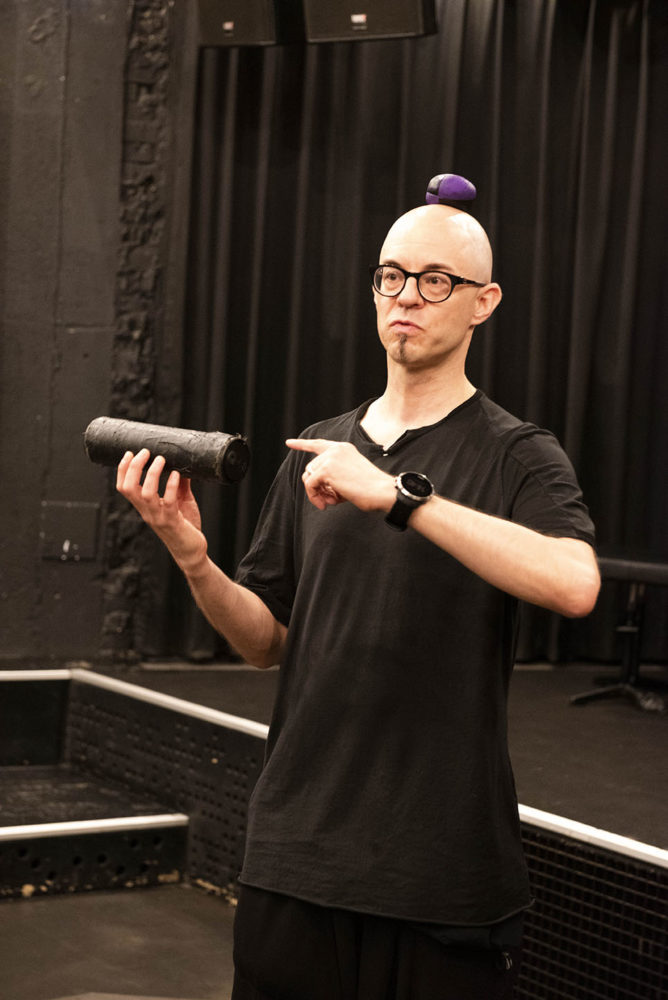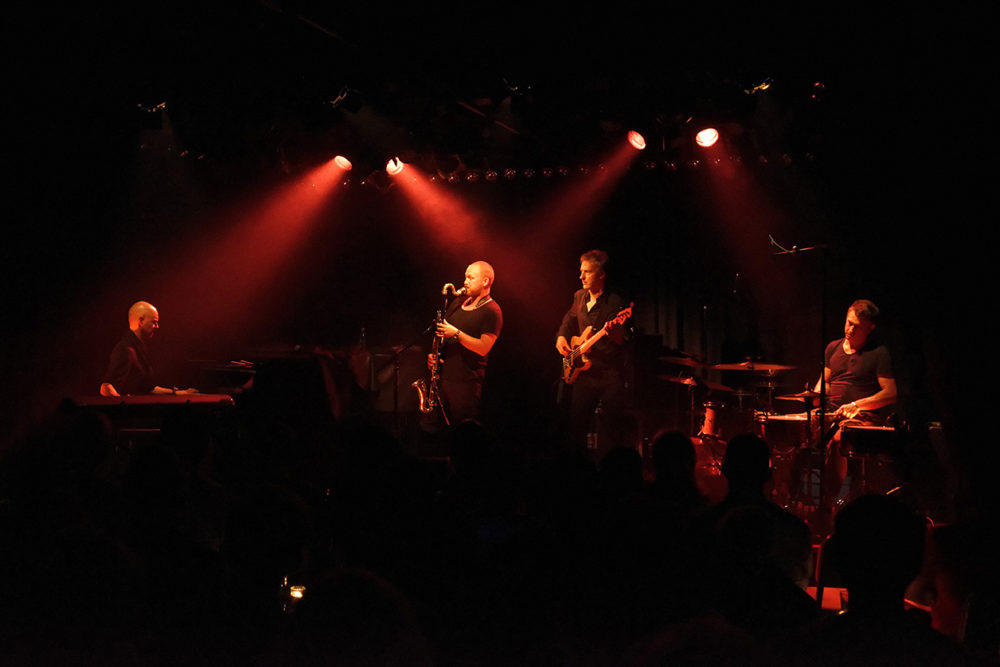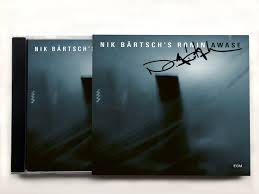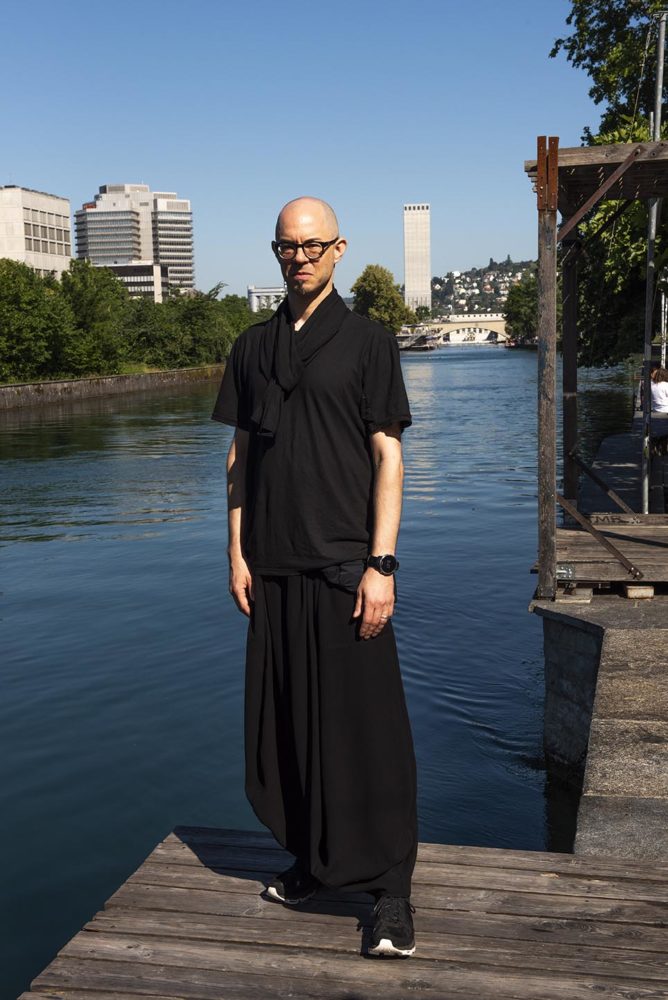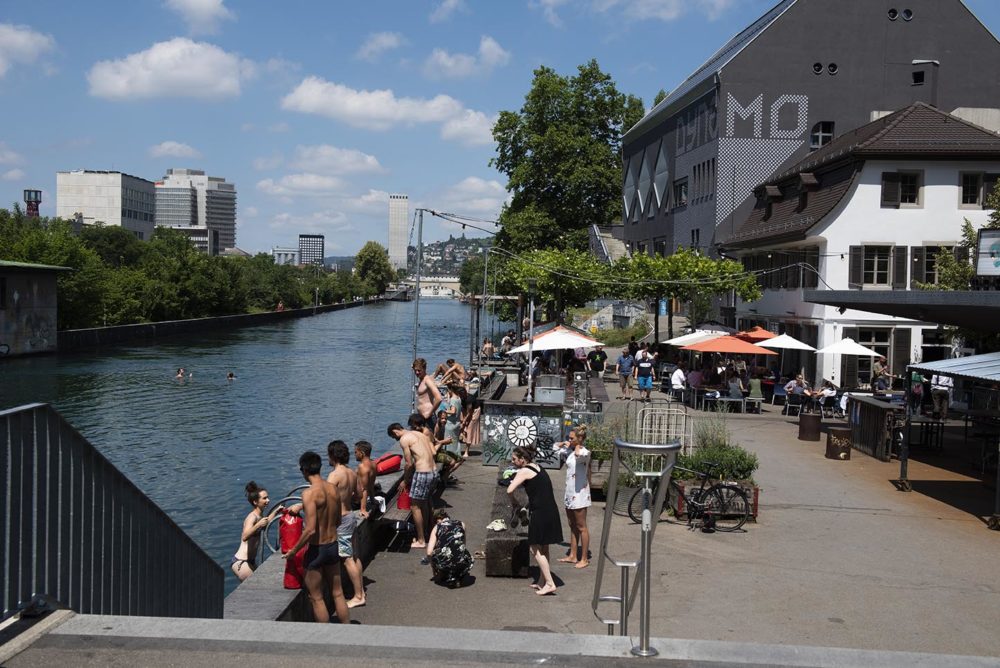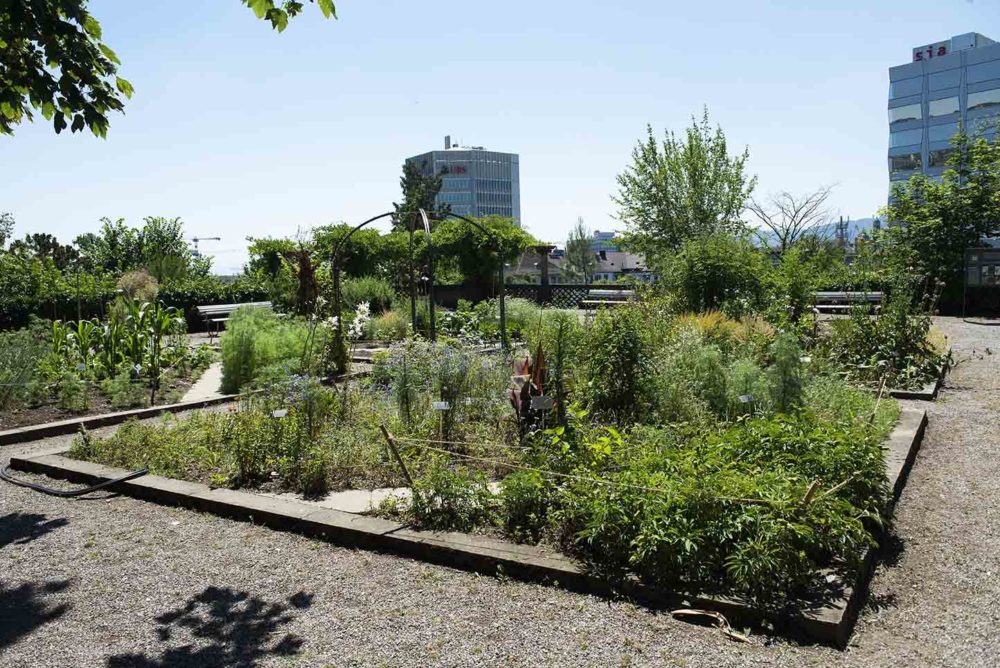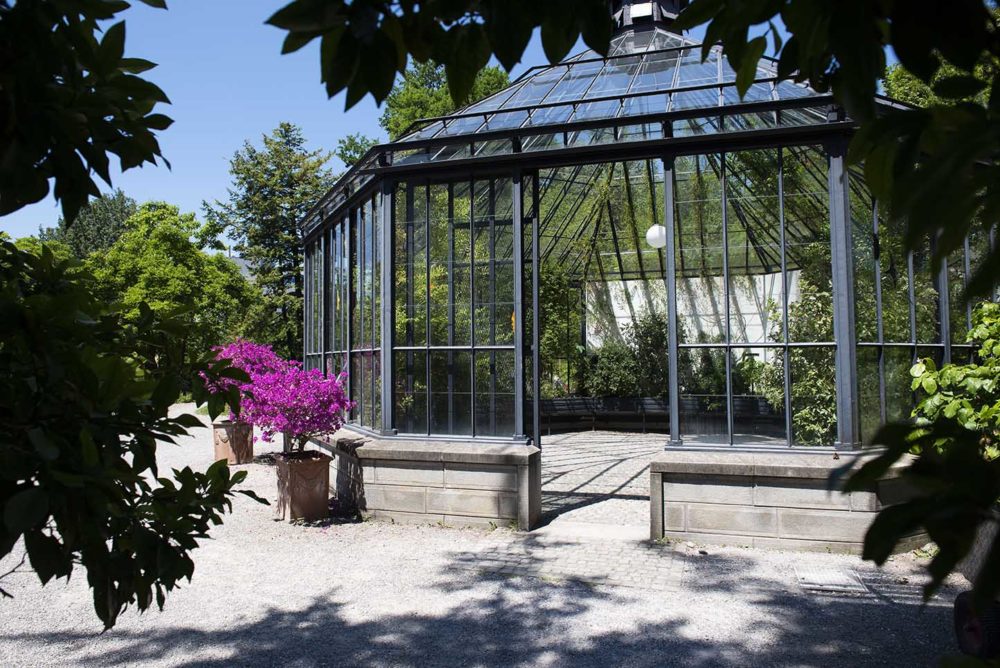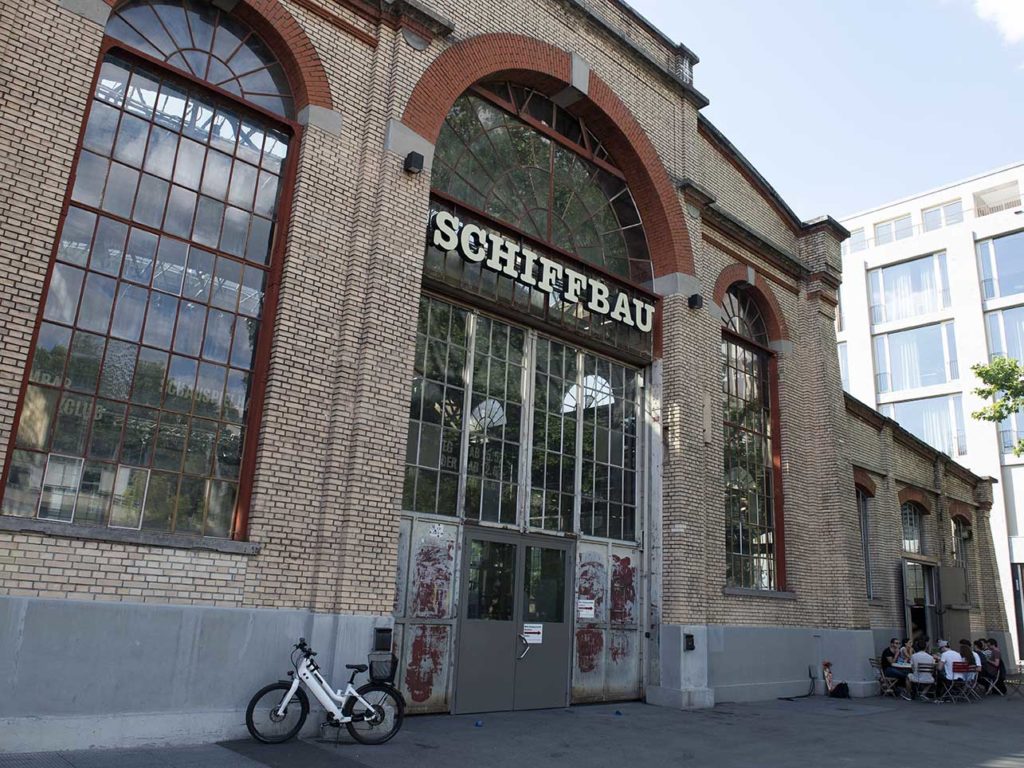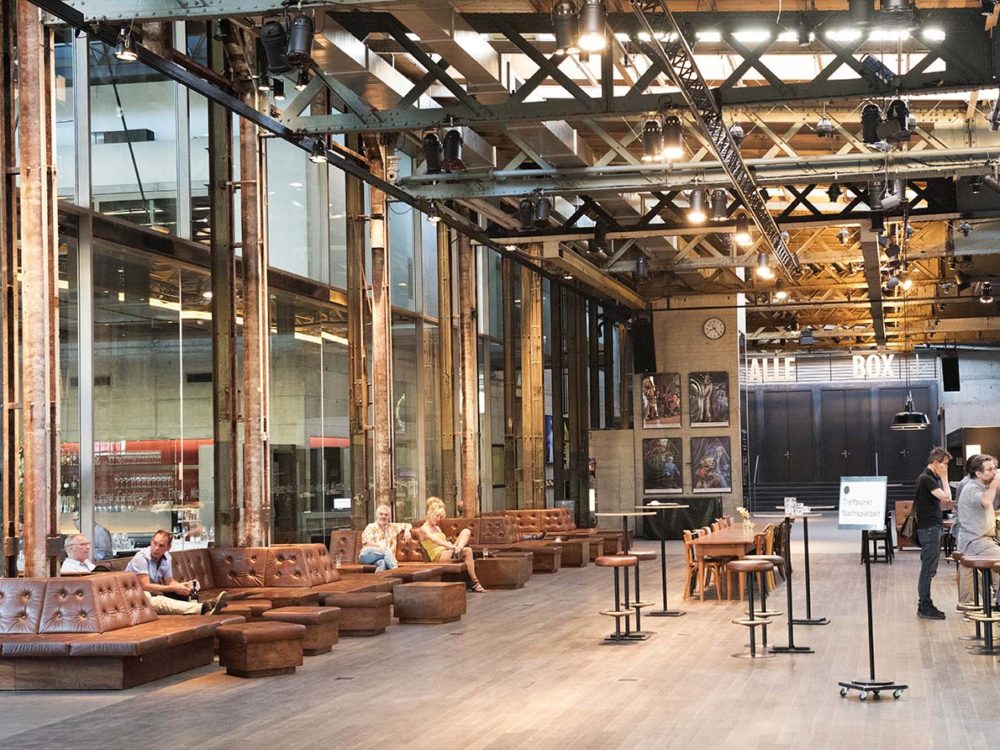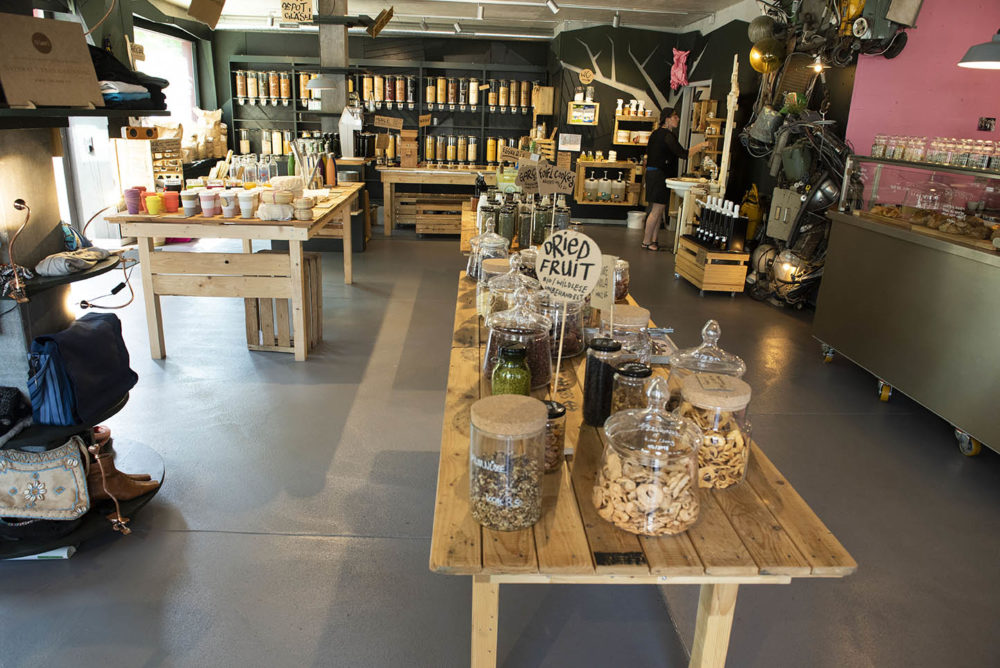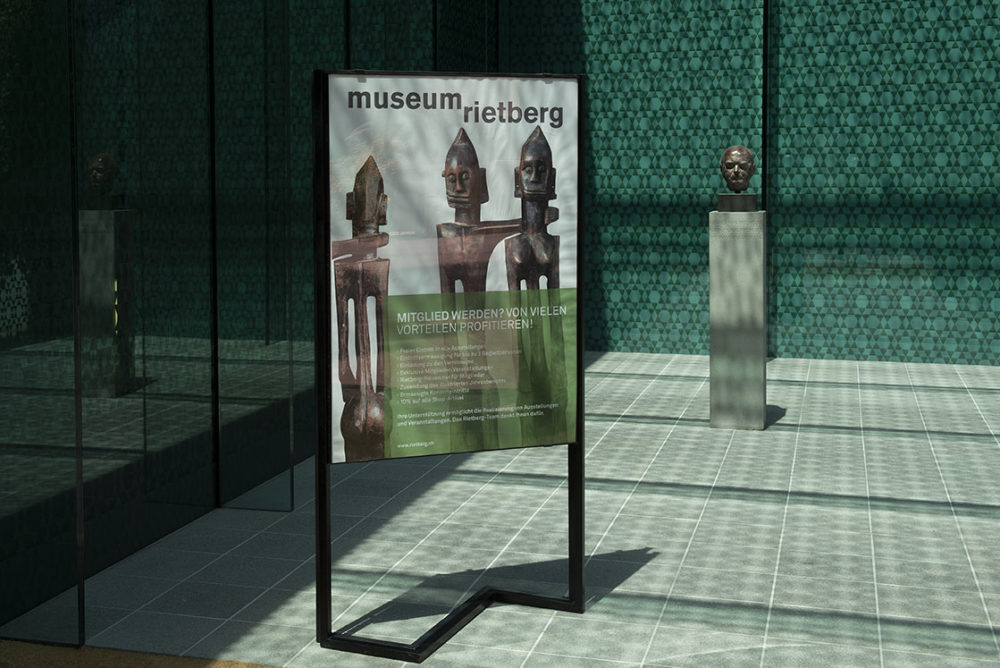The Swiss city of Zurich is best known as a leading financial centre because of its rich history, as well as for its gastronomic and cultural delights. But this compact ’boutique city’ is so much more. Zurich has been one of the metropolises with the highest quality of life in the world for years. Zen-funk pianist Nik Bärtsch knows all about it and shares a number of ultimate relaxation spots on the water.
Text: Angelique van Os | Photography: Henk Bothof
For a moment, I’m having trouble holding back my laughter. There I am, with four people in a circle and a ball on my head. I concentrate. I have to, because with my arm I try to keep another ball in the air. I’m looking for balance. Nik Bärtsch’s voice echoes quietly through the small room. I close my eyes. The rhythm continues. Takakakakakatak…. There is an ac-cent difference with the feet. The exercise becomes more complicated. Especially when we add to it and complement each other’s numbers out loud. I almost fall into a trance. “Okay, relax again and find your instrument. Now try to turn those different layers into music.” The pianist and composer Nik Bärtsch, who was born and raised in Zurich, is sitting behind a drum kit. He has been trained as a percussionist. This explains why his ingenious music is so rhythmically strong. For years the sympathetic musician has been known for his minimalistic, ritual zen-funk with his bands Ronin and Mobile. Awase (2018) is Ronin’s sixth studio album. For six years the group consisting of Kaspar Rast (drums), Thomy Jordi (bass) and Sha (sax/bass clarinet) worked on perfecting their sound. In addition, it’s all about blending the complex, layered patterns and rhythms into one another. Om de groep als een collectief te laten klinken, geeft Ronin elke maandag een concert in de Zürichse club Exil, waarvan Nik mede-eigenaar is. Should the band be on tour, then an act by Nik’s own label will be added: Ronin Rhythm Records.
Moment of consciousness
Prior to the concerts, interested parties can drop in for the workshop. And that is a special experience. It’s all about coherence, about shifting patterns and coordination; elements that Nik works out to perfection with his band. Because the challenge lies mainly in the organisation of time signatures and patterns that have to merge with harmony. The music is simply in the ear, but below the surface are complex structures. The exercises that support this are mainly based on Japanese Aikido and gyro kinesis (a modern form of balance exercises). “I try to loosen the muscles during the workshops with groove and meditative exercises. By making contact with the body and putting the senses on focus in a relaxed mode, so that musicians complement each other better. In our music there comes a moment of consciousness in which everything coincides. The title of our latest album, Awase, also refers to this. also refers to this. It is a term that is used in material arts and in the non-violent discipline of Akido. If you play live, you don’t have time to think. That’s what you do with body language. Aikido is all about harmoniously bringing down the attacker. Moving together, without a leader. This is also essential in our music. It is a kinetic dynamic coherence, where everything revolves around respect and connection.”
Two rivers
This connection is clearly perceptible during Ronin’s concerts. There is a relaxed atmosphere, which is interspersed with a high level of concentration. The Monday evening concerts (Montags) have been a fixture since 2004. Since 2009 Nik has been organizing this in Exil. Despite the fact that it remains a weekly challenge to offer high playing quality and to reach audiences, Ronin has made quite a name for himself internationally. So much so, that in Exil they attract a lot of (curious) foreign and loyal public. That also gives peace and security for Nik, who likes to spend a lot of time with his family. He lives in the green heart of the city. The quality of life in Zurich, with about 450,000 inhabitants, is pleasant because of all the greenery, the lakes and the compactness. There is little stress, but you do need a big wallet because everything is expensive.
The pianist is taking us to one of his favorite places. Near the central station and around the corner from the National Museum, the two rivers, the Limmat and the Sihl,come together. Zurich is situated more than 400 metres above sea level. The city centre is surrounded by water, where the Limmat river leaves the Lake of Zurich. The name is not for nothing derived from the Celtic word water. The Limmat stretches from the metropolis for another 36 kilometres to the mouth of the Aare and belongs to the Rhine catchment area. In the suburb of Baden, only 25 kilometres away, there is even water of 47 degrees Celsius, which originates from 19 Furthermore, the trendy idyllic city is surrounded by wooded hills such as the Zurich- and Uetliberg.
Natural water bath
Back to Nik. We walk along the Platzspitz Park. In the 80’s and 90’s it was a very rough area and had the nickname ‘needle park’, because of the many drug addicts. Now it is a popular place among locals, where people eat their lunch break or meet up with friends and family. We walk further over the bridge. Nik stops and says: “You’ll soon see that this place is full of people.” And indeed, half an hour later locals look for a place at the quay and the terraces are soon full. Swimwear comes out and people jump from the bridge into the water. In no time the clear green-blue water is filled with swimmers. A little further up, downstream, several beach bars can be found and people are sunbathing. The scene exudes a particularly relaxed atmosphere. And this is just one of those special water locations that Zürich is rich and not yet known to the masses. “It is never too crowded, there is plenty of space. People have a free natural pool here, where they can do a good workout by swimming against the current,” says the pianist.
Remarkably quiet
Nik has another tip. Past the station, in the west of the city centre, at the crossing of Usteribrücke and Gessnerallee you can go down an unobtrusive stairway. This is where the separation of the Sihl starts, which meanders far outside the city. We walk between old city walls, hip buildings and underneath medieval bridges. It’s remarkably quiet; the urban heroes seem far away. We follow the clear water for a few kilometres until we reach the compact old Botanical Garden. Between the centuries-old trees we see a beautiful outdoor river swimming pool with wooden decks, which also looks like a landing place for rowers and/or canoeists. Gradually the park is dripping with businessmen and shopkeepers. It is lunch time. We will take you to the top of the park, the Gessnergarten. This herb and flower garden has a beautiful view over the modern classical centre and is a tribute to Conrad Gessner, an in abundant Swiss botanist, naturalist and physician. What a silence. Not surprisingly, the locals are so relaxed and friendly.
Green marathon route
Before we walk up to the Gessnerallee again, we go straight on and arrive at the Rio Bar. This is the start and end of the Green Marathon Zurich route. The course is suitable for runners of all levels and there is no time pressure. You can start walking when you want and even in sections, spread over several days, the total length of 42 kilometers. The run runs from the centre to the lake, through to the green hills and back again. If you only want to walk part of the way, you can stop and shower along the way and the accessible public transport will take you back to your starting point.
Shipyard
Unfortunately, we have no time or condition to run a marathon. We return to the square of Exil in Zurich-West. Previously this was an industrial area. Since ten years it is in full development as a trendy city district. By tram it’s only a ten minute drive to the city centre. There are many restaurants and high (light) towers. Also here is the School of the Arts and you will find in the arched complex Im Viaduct, a (pricey) culinary market hall. Adjacent to the same square of Exil is also Moods, the largest (subsidized) jazz club in Switzerland. Moods was founded in 1992 and was completely renovated in 2016. It exudes the atmosphere of a pop podium, with standing places and a long bar. Since 2000, the club has been part of an imposing shipyard (Schiffbau), which also houses a theatre, restaurant and bar. We say goodbye to the cordial Nik Bärtsch, who arrives at the club by bike. After four days we understand very well that Zurich is his home base. “Hope to see each other again soon? And don’t go far and eat your swimwear”, jokes Nik. “Of course!”, we shout in the choir. Because the ‘vibrant’ acquaintance with this water city requires no trouble at all for a new rendezvous.
Zurich practical
Fast
We flew in just one and a half hours with Swiss International Airlines | swiss.com.
Responsible travel
By car or train. Approximately 8 hours from Utrecht.
Public transport
Zurich Cards (city travel pass); also gives access to various museums and boat trips. From approximately € 23-45.
More information: zuerich.com
Stages & tips
Moods
Extensive program | moodsclub.ch
Exil
(Montags) open all summer exil.cl and nikbaertsch.com
Museums
Zurich has over 50 museums and 100 galleries. Our favourite: the Rietberg Museum, surrounded by a spacious, hilly park Exhibitions mainly consist of Oriental and African art.
Shop
Foifi – Zero Waste Ladencafé| Shiffbaustrasse 9B (right behind Exil)| Foifi.ch
Foifi is a shop with a mission: they offer waste free, sustainable and healthy nutritious products, packaged in recyclable bottles. Besides delicious food, tea, soap, detergents, caps and homemade bags, t-shirts and cuddly toys, you can also enjoy breakfast and lunch. Of course, homemade sandwiches of organic origin.
This trip was made possible by Zürich Tourismus, Swiss Air and Maarten Visser. Special thanks to Nik Bärtsch. Special thanks to Nik Bärtsch.

